All about the repair of vacuum cleaners

Today it is difficult to find a family wherever there is an ordinary vacuum cleaner. This small cleaning assistant allows us to significantly save time and maintain cleanliness in the house, so that dirt and dust does not harm our health. But despite its simplicity in design and operation, such a device breaks down quite often. And given its not the lowest price, it is better to fix it, since a new one is a serious blow to the family budget. In this article we will talk about repairing vacuum cleaners, disassembling them, diagnosing problems.
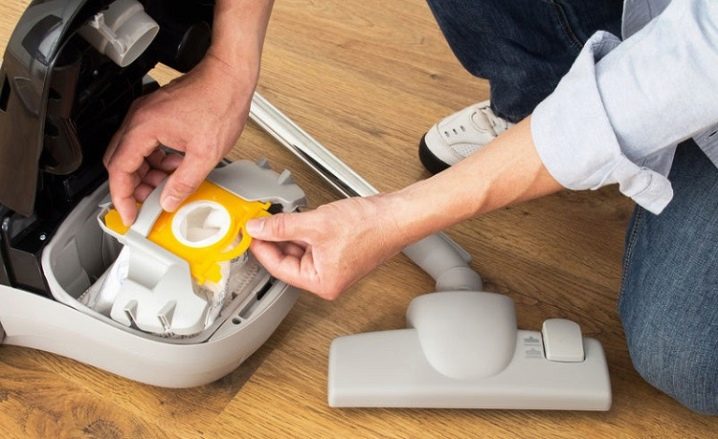
Troubleshooting
It is not always immediately possible to understand that the vacuum cleaner is broken. For example, it hums a lot, but continues to work and perform its functions, which is why many do not think that the device has broken down. And this is already a breakdown, which will simply lead to the failure of the device after a while. Of course, there can be a fairly large number of malfunctions, but usually the motor is the cause of a vacuum cleaner's breakdown. Such a breakdown is typical for almost any brand and any model, regardless of the company that produced the equipment. For a number of points and subtleties of the vacuum cleaner, you can diagnose a breakdown and try to repair the equipment in question with your own hands:
- the first sign of incorrect motor operation will be that it works loudly and that a cloud of dust appears over the device during operation;
- if the vacuum cleaner does not suck in dust well or does not pull at all, then this may be evidence of a problem with the hose;
- Another sign of a violation of the tightness of the hose will be the quiet operation of the device, and the essence of the problem may not be in the deformation of the corrugation itself, but in malfunctions of the receiving brush;
- if the suction speed is not high, then the reason for the decrease in the operating speed may be a problem associated with the breakdown of the bearings, and from time to time the device will restore operation in normal mode;
- if the device makes a lot of noise, then with a high degree of probability the motor has broken; in some cases, the presence of a malfunction in the motor will directly affect the possibility of sucking in air masses.

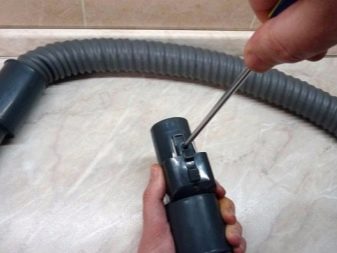
Of course, there are a lot of different problems, one problem may have several reasons, but the above situations allow you to quickly diagnose the presence of a breakdown and start doing something.


Frequent breakdowns
It should be said that breakdowns and deformations the following details are usually most susceptible:
- motor windings;
- electric power wire;
- fuse;
- bearings;
- brushes.



In some cases, repairs can be carried out with your own hands, and sometimes you will have to seek the help of specialists from the service center. In some cases, it will be easier to buy a new vacuum cleaner altogether. Let's start with the brushes. They are usually mounted in mines. Here it should be said that they are ordinary carbon, which means that, if desired, they can be grinded down to fit as required. If the area of contact with the collector is not so large, then there is no problem, after a while the brushes will run in. Their ends are slightly erased in a semicircle inward.
Any of them is slightly pressed by a special spring through which energy flows, which increases the safety margin. The carbon will continue to work until it is completely erased.An important point will be that the collector itself must be as clean as possible.
It is better to wipe it with some substance, and if necessary, remove the oxide type film until there is a copper sheen.


The next part is bearings with a shaft... Usually the shaft is attached to the stator on two bearings, which do not match in size with each other. This is done so that the disassembly of the vacuum cleaner motor is much easier. Typically the rear bearing will be small and the front bearing large. The shaft should be carefully knocked out of the stator. The bearings have anthers, where dirt can also get. More frequent breakdowns are:
- reduced efficiency of the HEPA filter;
- clogging of the cyclone filter mesh;
- blocking of the brush turbine by some foreign object;
- the inability to rotate the wheels due to the ingress of foreign objects;
- blockage of the rod tube;
- rupture of a hose made of corrugation.


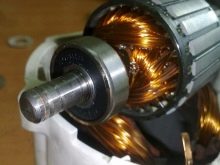
Now let's talk about this category of problems in a little more detail. Vacuum cleaners are usually equipped with reusable filters. That is, after each cleaning process, it is necessary to remove the filters, rinse them, clean them and put them back in place. But it should be understood that repeated use and eternity are not synonymous. At some point, the filters will need to be replaced, and if this is ignored, then some complex repair may become necessary. And the filter cleaning cannot be complete. With each use, the material from which they are made becomes more and more dirty. And at some point, the filter already passes only half of the air from the original volume.
At this indicator, the operation of the vacuum cleaner will already be disrupted. That is, the engine continues to operate at the same speed, but the resistance in the process of pumping and suction will increase the load. The currents will increase, the winding. The electric motor heats up more, which will lead to wear.
With further operation in a similar mode, the day will come when it turns out that the engine overheated and simply burned out or jammed.


The next breakdown is a clogged HEPA filter. Such material is difficult to acquire, but even here you can solve the problem and find a substitute. The harder it is to install. First, carefully open the double wire mesh to remove the filter material. This frame does not seem to be recoverable. But if desired, it is opened.
First, using a sharp knife, cut the area where the two plates are mated, with a little effort we divide the frame into halves. Now we change the filter to another one and glue the holder frame. The same will apply to the electric motor protection filter and strainer used in cyclone solutions. That the other filter is heavily clogged with debris due to the fact that users improperly operate the vacuum cleaners and allow containers to be clogged with waste above the safe mark.
The third problem concerns the part that connects the device inlet to the telescopic tube where the nozzle is located. Deformations of the soft corrugated hose can be observed in areas of soft folds due to material wear or as a result of loads applied to the point of wear. As a rule, the most susceptible to deformations are the places where the joint of the hose with the lock pipe or with the pipe-rod pipe is carried out.
Most often, such a hose can be repaired with scotch tape. True, the durability of such a solution will be in question, but as a temporary measure is suitable.


First, cut off a part slightly further from the break and carefully remove the remnants from the inner tube part. Usually it has a thread just for hose winding. On such a thread, the cut hose can be simply screwed into the pipe, the repair will be completed at this point. Practice shows that there is no point in using glue. If a gust has formed in the center of the hose, then you can use the available means.For example, a piece of rubber tube from a bicycle tire. In terms of physical dimensions and taking into account the rather tight covering, such a material would be an ideal solution. Before that, the parts of the hose are cut and glued, after which a coupling from the tire from the bicycle is pulled over the joint made.
The next malfunction is blocking the movement of mechanisms. A similar problem can occur with a brush turbine or wheeled chassis. The units are simply equipped with various parts that rotate - rings, gears, shafts. During cleaning, various debris gets into the places where they are located, which can wind up on the shafts and after a while as it accumulates, it simply blocks the work of a rotational nature.

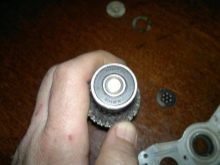

Such problems cause an increasing load on the engine, which becomes the reason that at first it heats up very much, after which it simply turns off at a certain moment. To correct this type of problem, you first need to unblock the nodal movement. The turbo brush should be disassembled and well cleaned of debris. If you remove the top cover of the device, you can access the area where the wheels are located. Often, various debris accumulates right here, which blocks their rotation.
Now let's talk about more serious breakdowns of the devices in question, which occur quite often. Usually they require the intervention of professionals, but a number of them can still be solved with your own hands. The first problem of this type might be with the power button and power cable. Due to such a malfunction, it is impossible to start the vacuum cleaner or it is impossible to fix a certain operating mode. In the first case, when you press the power button, the device does not start, and in the second it starts, if you press the button, it immediately turns off if you release it.


A defective vacuum cleaner key is the reason for the inoperability of the device. It is one of the most common, but quite easy to fix. It is very simple to make sure that the reasons for the breakage are in the button - you just need to check it with a tester. If the key is broken, then it will not make contact between the terminals in any position. If the key is broken, then it will form a contact exclusively in the pressed position. To check, one probe must be connected to the contact of the power plug, and the second to the button terminals. The power cord is also tested with a tester. In this case, it will not be superfluous to check the performance of the sockets.
The second frequent and serious breakdown will be the situation when the air mass intake speed regulator is faulty. Almost every vacuum cleaner is equipped with such a regulator. It is responsible for regulating the shaft speed by the motor, which is mounted inside the device. Such a module looks like an electronic circuit based on thyristors. Usually, in this electrical circuit, an element such as a thyristor switch breaks down.
It is usually located on the lower left side of the board. If this element is faulty, then, as a rule, the vacuum cleaner either cannot be started, or there is no way to adjust its operation.


With this problem, it will be necessary to disassemble the device, remove the regulation module and replace the parts that are broken. In this case, it will be difficult to work if you do not have certain skills. It is specifically about distinguishing a resistor from a capacitor and the skills of using a soldering iron. But if you want to, you can learn it.
Another common problem will be the failure of the electric motor of the vacuum cleaner. This problem will probably be the most difficult. This detail will require special attention. There is an option of replacing the part with a new one, but in terms of costs it will be half the cost of the entire vacuum cleaner. But also specifically in the engine, various parts can break.For example, given that the shaft in the motor rotates fairly quickly, the thrust bearings are under severe stress. For this reason, bearing defects are considered extremely common.
This is usually indicated by very loud operating noise. It seems that the vacuum cleaner is literally whistling.


Eliminating this problem with your own hands seems to be difficult, but feasible. But first you have to disassemble the device in order to get to the engine. Let's assume that we managed to get to it. When removed, the contact brushes and the impeller guard must be removed. This process will be extremely simple. The brushes are attached with one screw and can be easily pulled out of the mounting type niches. On the impeller casing, carefully bend back the 4 rolling points and, using light force, dismantle the casing.
The most difficult thing will be to unscrew the nut that secures the impeller to the motor shaft. When this can be done, the shaft is removed, after which it is necessary to remove the bearing from the armature and replace it. After that, the assembly is carried out in the reverse order.
In general, as you can see, there are a lot of frequent breakdowns, they are all of different types, but almost all of them can be dealt with on their own, without the involvement of a specialist.

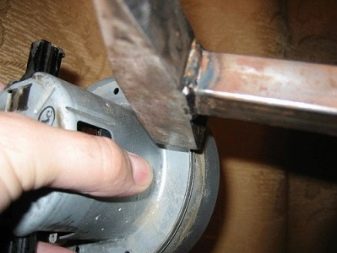
How to disassemble a vacuum cleaner?
Regardless of what kind of breakdown you are faced with, in order to know its causes and why the vacuum cleaner stopped working, you should disassemble it.
Of course, each model has its own special device, but the following chain of actions will be an approximate general algorithm.
- It is necessary to dismantle the sealing grid, which is located under the cover of the dust container area. It is fastened with two screws or other threaded connections. You can unscrew the screws with a regular screwdriver.
- When the sealing grille has been removed, disconnect the control box and the dust container cover.
- Depending on the type and model of the equipment in question, the dust collector should be simply removed or unscrewed. There should be a waste collection mechanism under it, under which the body is connected to the motor of the device.
- To get to it, you need to separate the base and body. In some models, this is done by twisting a hidden bolt that is located in the handle.
- Typically, the motor is protected by a special fabric-backed gasket that is attached to the inlet of the intake hose. The gasket should be removed and cleaned or, if necessary, replaced with another one.
- Now we remove the wires from the motor that are responsible for the power supply. To do this, unscrew the bolted clamps.
- Now it will be necessary to check the bearing pairs, which are responsible for the operation of the engine. The slightest indication of wear is the presence of various irregularities and cracks. If there is something like this, then parts should be replaced.
In addition to the bearings, it will not be superfluous to check the integrity of the brush and motor armature.



Now let's move on directly to disassembling the motor. It should be said that carrying out such procedures requires experience in carrying them out. Otherwise, it is better to consult a specialist.
- The cover must be removed first. This can be done using a straight screwdriver, a strip or a ruler. It fits quite tightly to the motor, which is why you can first gently knock on it in order to disconnect. This should be done carefully so as not to physically harm him.
- When the cover is removed, it is possible to access the impeller, which is held in place by built-in nuts. They are tightly attached with glue, so you should have a substance such as a solvent on hand.
- There are 4 screws under the impeller that secure the motor. They should be unscrewed one by one.
- Once the motor has been accessed, it should be checked for proper functioning.
If it does not work, then you should find out why it broke, troubleshoot, replace the broken parts and reassemble in the reverse order.


Note that a model that can also carry out wet cleaning will be more difficult to repair, due to the fact that it will also be necessary to carry out work with a water pump. Its main task will be to supply liquid to the dust collector, which is why the pump is usually mounted at the inlet.
When repairing a washing vacuum cleaner, you should also be aware of the aspects of disconnecting the pump.
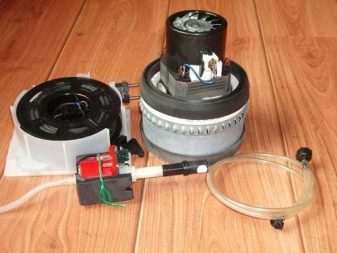
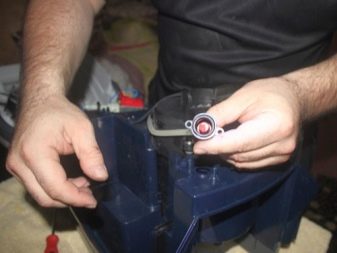
What if it won't turn on?
From time to time, there are situations when the vacuum cleaner does not want to turn on at all. Should the device be disassembled in this case? Not in all cases. The fact is that the reasons for this situation may be different. For example, the vacuum cleaner does not activate, it did not break down before, but the technology is not activated when the power button is pressed. The reason may be problems with the power supply. That is, an outlet or an electrical wire, which is responsible for supplying power, could simply break.

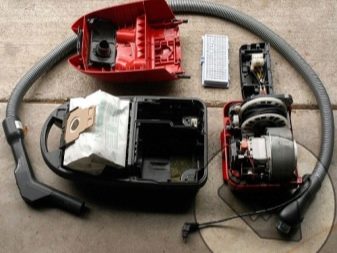
All elements of the electrical circuit should be very carefully inspected. Usually, problems that exist can be found right at the plug, which is inserted into the outlet. Due to the fact that the cord, which is responsible for supplying electrical power to such a device as a vacuum cleaner, is quite mobile, it is characterized by increased vulnerability and quite often deformed places can form on it during operation.
If the vacuum cleaner works, but the speed cannot be adjusted in any way, then this is about the same problem. But in this case, most likely, we are talking about the loss of contact.
This defect can be eliminated by replacing the resistor or slide triac.


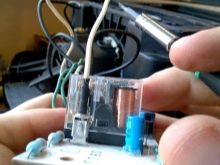
How to repair an engine?
As can be understood from the above, the failure of the electric motor of the vacuum cleaner is classified as a rather complex malfunction. Typically, modern models use axial-type motors, which have a rotational speed of about 20,000 rpm. This part is a structure that requires special attention if repair is required. To carry it out, you will need to have the following tools:
- a pair of screwdrivers for various sizes of Phillips screws and a pair of flathead screwdrivers;
- tweezers;
- nippers or pliers;
- locksmith's vice;
- substance for lubricating the motor.



It should be noted that you should follow the safety rules and in no case repair the electric motor of the vacuum cleaner connected to the electrical network. If we talk directly about the repair of the device, then to carry it out, you first need to disassemble the device. Moreover, this should be done in a clearly established order:
- removal of the container for collecting dirt, rear and front filters;
- we unscrew the screws located under the filters with a screwdriver;
- we dismantle the body of the device, raise the front part and only after that the rest, the body is usually removed very easily;
- now we clean the body of the electric motor itself using a brush or rag.



Inspection and further repair of the device should be carried out, the last process will be carried out according to the following algorithm:
- first, with a screwdriver, unscrew a pair of side bolts that are located in the upper part of the case;
- turn it a little and inspect the motor (it will not work to dismantle it now due to the fact that it will interfere with the coil implementation);
- carefully release the motor from the wires, disconnect all the connectors and remove the coil wires so that the coil itself is still on the body;
- now we remove the engine, after which we repeat cleaning it from dust;
- then we dismantle the sealing gum, for which we unscrew a couple of side bolts;
- using a screwdriver, disconnect the two halves of the motor housing;
- now from the case made of plastic, you need to pull out the motor itself;
- when inspecting the upper part of the motor, you can see the so-called rolling, they should be bent in the opposite direction, and a screwdriver should be inserted into any slot so that the halves are separated from each other (this will free the turbine from the housing);
- using a 12 socket head, it is necessary to unscrew the bolt (the thread is left-handed, therefore, when removing the screw, it must be turned clockwise);
- the motor stator must be wedged with small wooden blocks, and during operation, the entire structure must be supported;
- we dismantle the turbine;
- take out the washer and unscrew a couple of bolts;
- at the bottom there are 4 more bolts that need to be unscrewed;
- then we remove the brushes, before that, having unscrewed all the bolts;
- now you need to knock out the anchor, then insert the key into the hole and knock on it with a hammer; after these manipulations, he should, as it were, jump out;
- Now you should pay close attention to the bearings: if they are in good condition, then they can be lubricated with oil;
- using tweezers, you need to pull out the boot; if the bearing spins with a sound that resembles rustling leaves and at the same time remains dry, then it should be cleaned and well lubricated (a carburetor cleaner can be used to clean this part).



That's all. To complete the work, it remains only to assemble the device in the reverse order. As you can see, the repair of vacuum cleaners is a process that will depend on the complexity of the breakdown. If it is not too complicated, then it can be easily done with your own hands. If the problem belongs to the category of rather complex ones, then it would be better to contact a specialist, since the intervention of a person who has no experience can not only aggravate the breakdown, but also lead to injury. Especially when it comes to the electrical part.

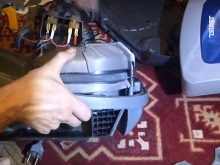

You can learn how to disassemble the motor from the vacuum cleaner from the following video.













The comment was sent successfully.